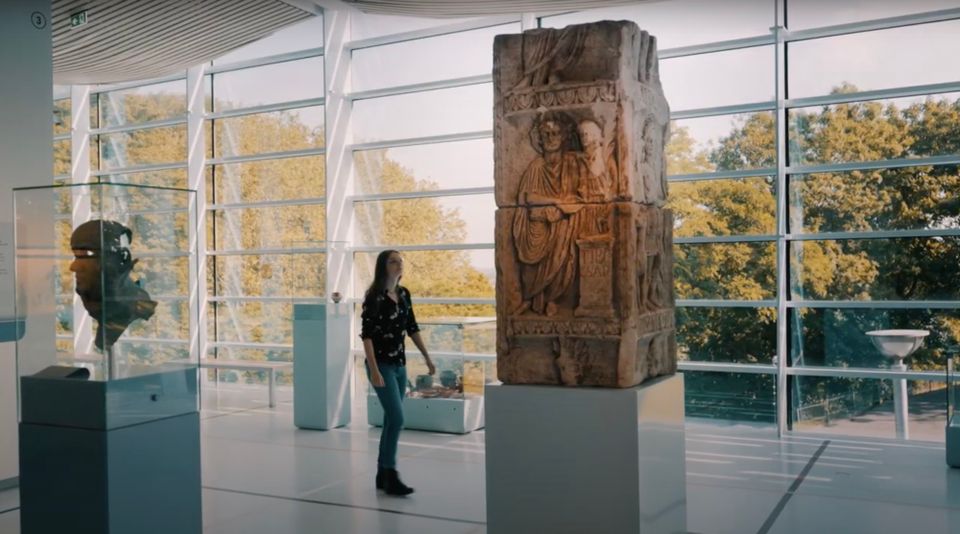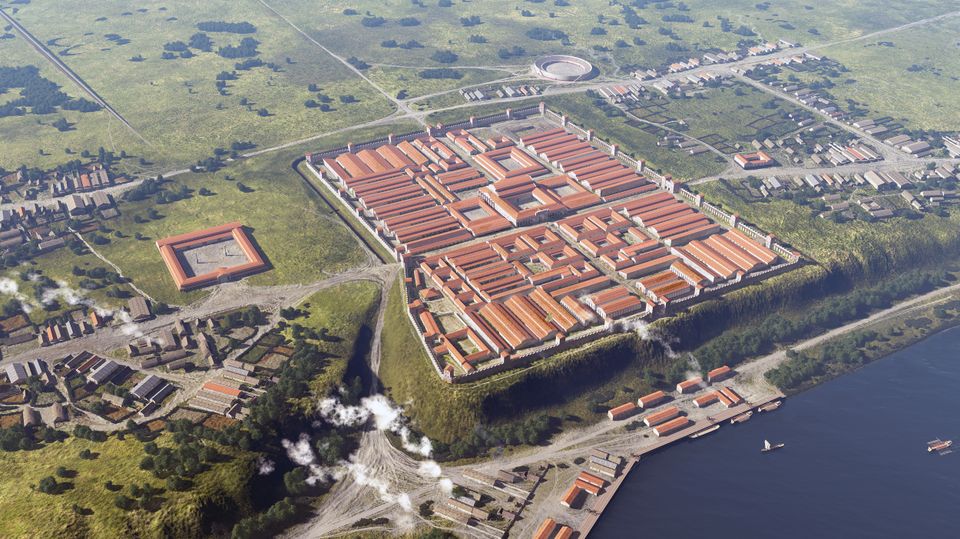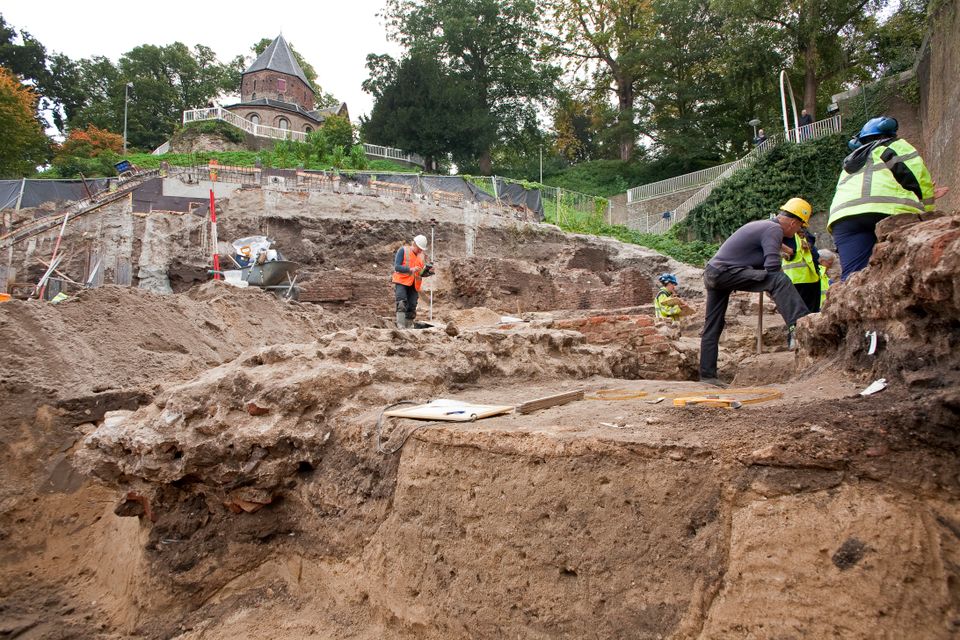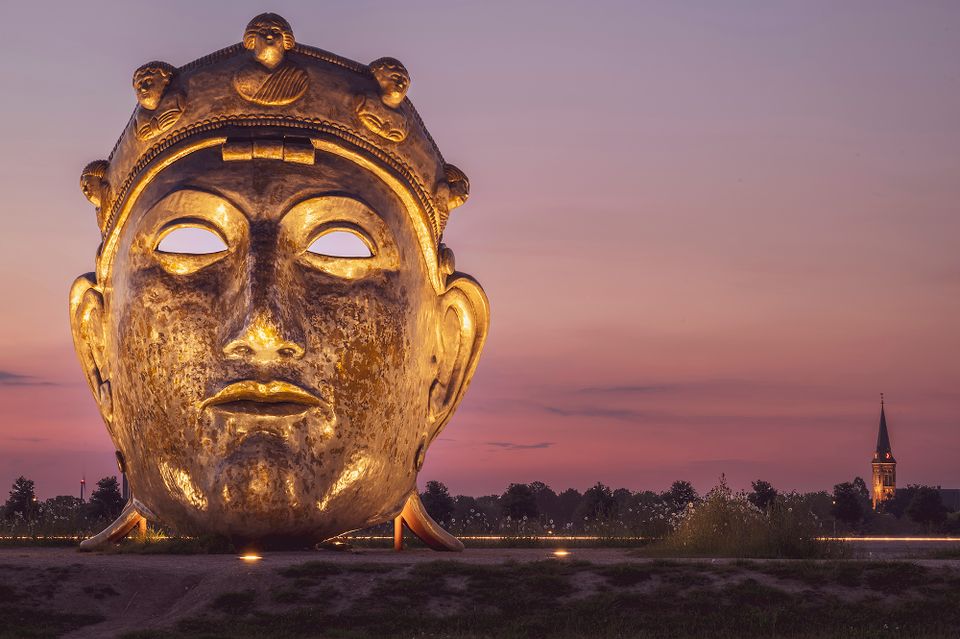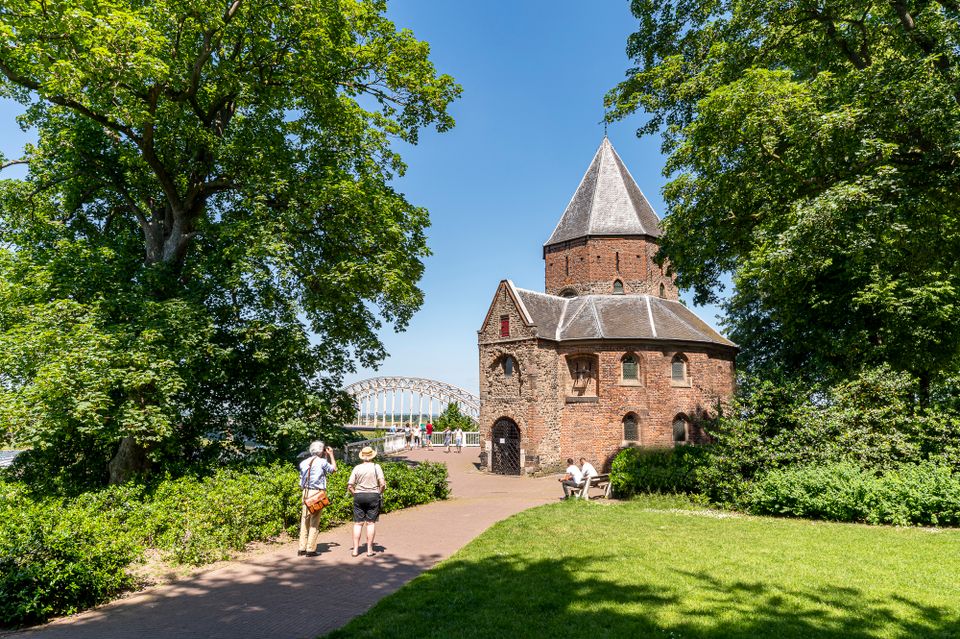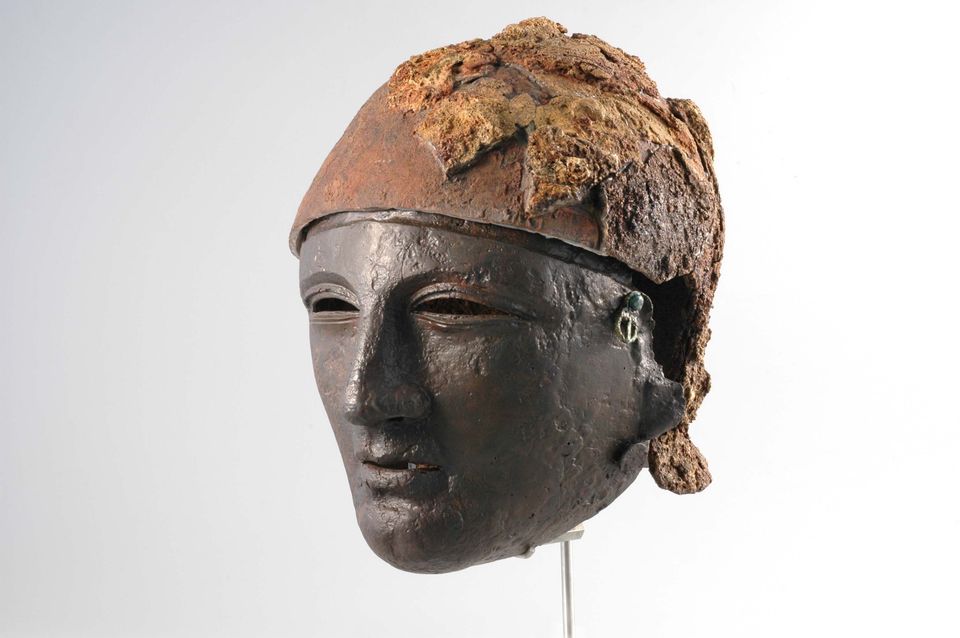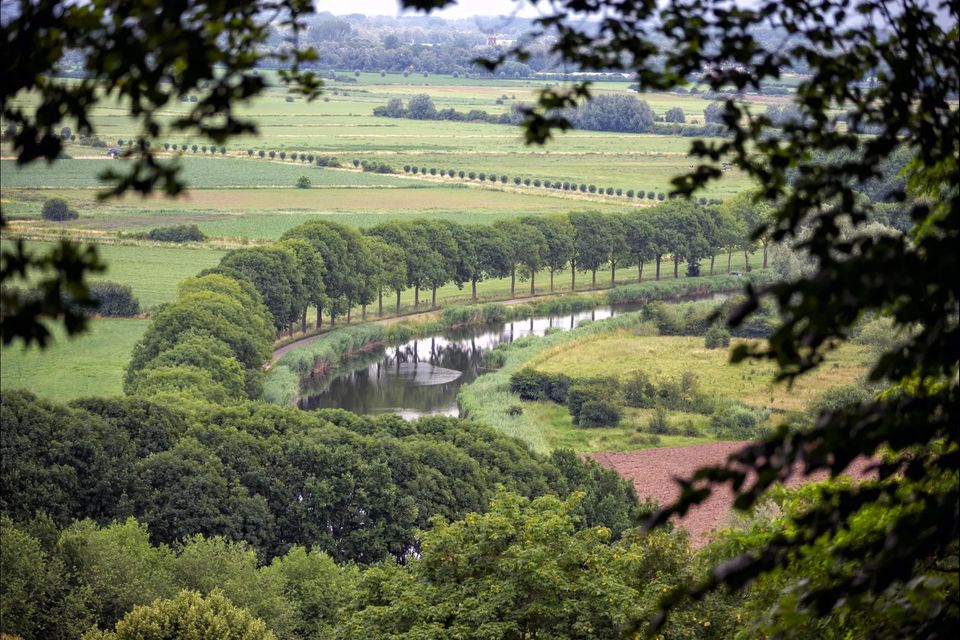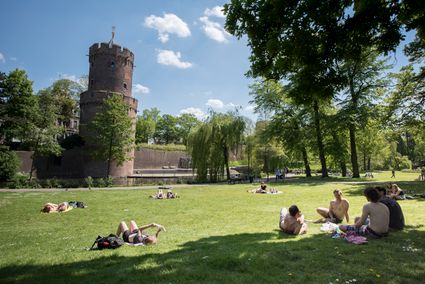Roman Limes in Nijmegen
The Lower German Limes has been on the UNESCO World Heritage List since 27 July 2021. UNESCO has thus designated the Roman army camps that have been preserved in the soil of Nijmegen as World Heritage Sites. The Roman army camps at Het Valkhof, Hunnerberg and Kops Plateau are part of the Lower Germanic Limes, the Roman national border in what is now the Netherlands and Germany. Nijmegen now has approximately 61 ha of World Heritage Site, preserved in the soil, our archaeological soil archive that marks us out as the capital of the Roman Netherlands.
Ever since the 1950s, archaeological excavations have been taking place in Nijmegen on a large scale. The archaeologists of that time soon discovered that Nijmegen concealed an exceptional and for the Netherlands unique soil archive. Excavations on and around the Valkhof, the Hunnerberg and the Kops Plateau revealed more and more about the military character of the origins of Roman Nijmegen.

Finds like the pillar of the Emperor Tiberius from the soil of the Kelfkensbos, beautifully decorated face masks of Roman horsemen, remains of military encampments and many other references to the presence of Roman soldiers revealed the importance of this place in the Roman advance to conquer the northern part of Europe. However, this advance did not fully succeed and eventually the Roman emperors chose to keep the Rhine as the northern border and to defend it with a large network of watchtowers and fortresses (castella).
Discover the Limes via 3 walking routes
Experience the Limes in Nijmegen via 3 beautiful walking routes. Download the routes below, set off and discover Roman Nijmegen through fun facts and stories.
Route Via City Centre 2,3 km
Route Via Nijmegen East 6,9 km
Route Via Nijmegen West 5,5 km
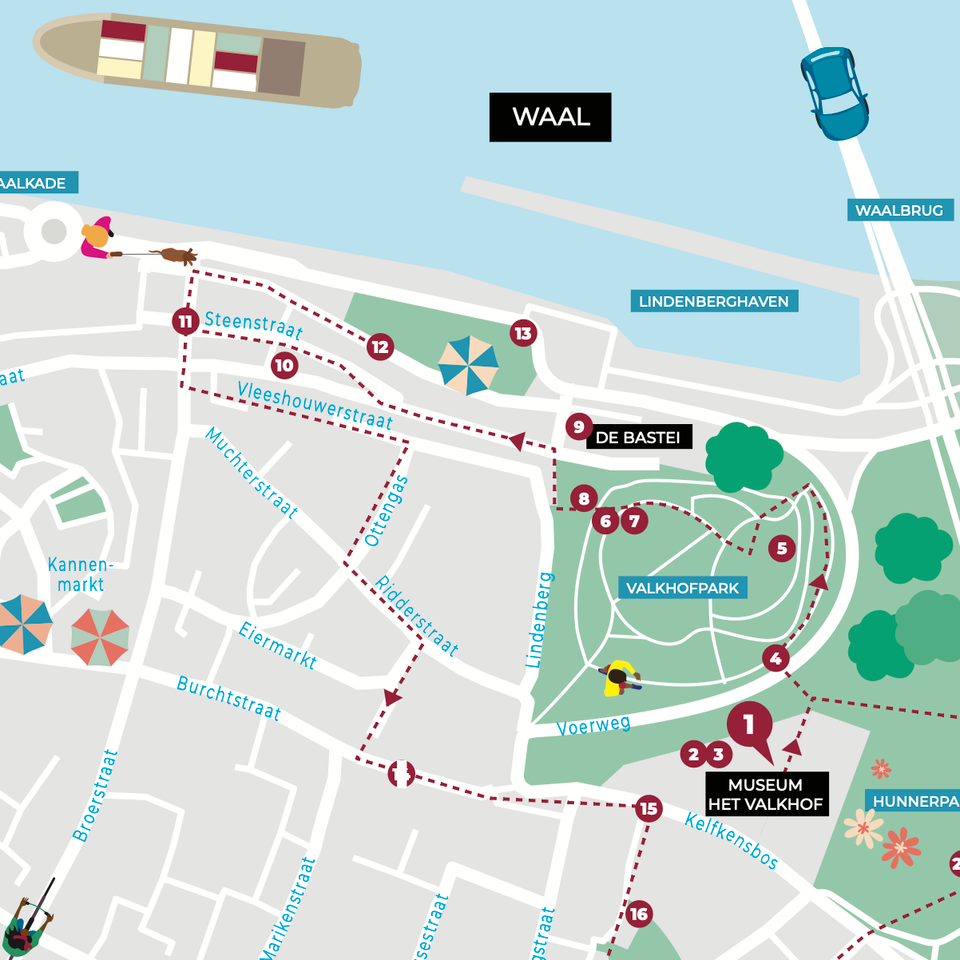
Roman Limes
Near the Rhine, the Roman legions encountered resistance from Germanic barbarians on numerous occasions, as the Roman historian Tacitus described the indigenous, autochthonous tribes in his books from the first century AD. Near Nijmegen, the Roman commanders found a suitable strategic place, which served as a base from which to extend the Roman border of the empire beyond the Rhine step by step.
Although the Romans of Nijmegen did not live directly on the border, the site of what would later become Nijmegen was indispensable for the conquest of territories in the Netherlands and Germany thanks to its high, strategic location on the river. Famous lords of the field lived here from time to time and they might even receive high imperial visits. The Nijmegen army towns grew into an important military centre and had a great attraction for traders and craftsmen from all parts of the known world and for the local population.
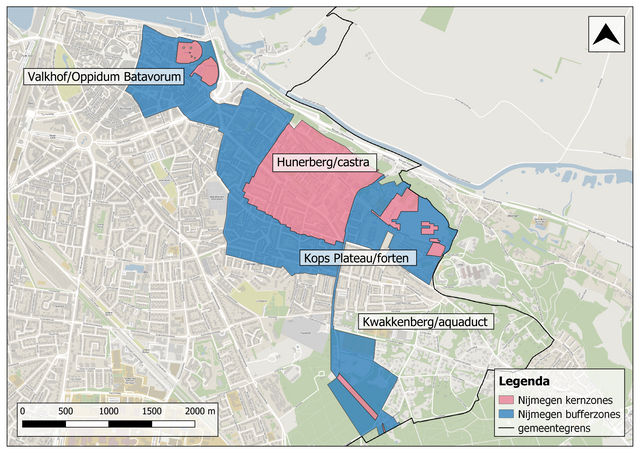
Valkhofpark - (en Hunnerpark)
Het Valkhof is one of the most special places in Nijmegen. The park is situated high on a steep hill and has a history that goes back more than two thousand years. People came here as early as the prehistoric era and traces of the Roman past lie safely in the ground. Two of the oldest stone buildings in the Netherlands are included in the park. These structures, the Nicolaaskapel and the Barbarossa ruins, are tangible remnants of the twelfth century castle. This castle was built on the foundations of a late Roman fortress and a Carolingian palace.
The grounds of the Valkhof, where the first-century settlement Oppidum Batavorum, or 'fortified city of the Batavians', was originally located, was later also laid out as a castellum where soldiers camped. Their families settled around this fortress, and a lively industry developed here with craftsmen and traders. The first Roman 'city', complete with defensive wall and moats, where 2000 years later Museum Het Valkhof with the municipality's archaeological collection was located.
Times of prosperity alternated with times of unrest. Did the Batavian Revolt really take place around the Valkhof, where traces of fire mark the foundations of buildings from that era? In any case, the inhabitants fled from this spot, but they did not allow themselves to be chased away easily. A new city was built on the west side of the present city, larger, more Roman and more prosperous than ever before: Ulpia Noviomagus.
Hunnerberg & Kops Plateau
The strategic hill of Hunnerberg and Kops Plateau was chosen by Roman commanders as a base and safe haven. A castra (army camp) was built on Hunnerberg and many people moved there. Thus, a kind of village arose around it with a forum (market), an inn and an amphitheatre (outdoor theatre). The castra itself, a large barracks, provided space for two Roman legions on about 42 ha. We know for sure that the Tenth Legion nicknamed Gemini (Twins) lived there for a while. This legion not only had to defend the Lower Germanic Limes and maintain order in the area, but also played an important role in the construction of roads and large and monumental public buildings in Nijmegen.
The Kops Plateau was equipped for the cavalry units of the Roman army. Very unique for the Netherlands was the enormous and exceptionally luxurious commander's residence (praetorium) on the Kops Plateau. The walls were plastered, there were colonnades and an ornamental garden. Did the heir to the imperial throne Germanicus, who earned his nickname from the alleged conquest of Germania, perhaps reside here?
Aquaduct
An enormous effort was even made to build a genuine Roman aqueduct, the only one in the Netherlands. This structure was intended to provide the legions with clean drinking water from the sources in Berg en Dal. A technical tour de force, which we still do not fully understand how the Romans managed to pull off. Even above ground, traces of this can be seen if you know where to look.
Read more
Who were the Romans and the Batavians?
The Romans were the first people to write about the Netherlands. This is exceptional and marks the turning point for the Netherlands between prehistory (before the written era) and protohistory (where the local population did not yet write themselves). It is known that the Romans who came to Nijmegen as soldiers came from different parts of the vast Roman Empire, from Brittannia to the Middle East, from North Africa to the present-day Rhineland. Thus, there was a very mixed, multicultural company settling here.
Before the Romans came to the Netherlands, there had already been people living around Nijmegen for a long time. They were called Batavians by the Romans. The Batavians lived here very well in large houses with horses and cattle. The soil was fertile for agriculture and the people did not lack anything. The arrival of the Romans meant that they could exchange their products for things, such as jewellery, from distant lands. Of course, the arrival also meant that they had to comply with the wishes of the Romans, which sometimes led to confrontations.
In addition, the Batavians could be voluntarily enlisted in the Roman army. The Batavians were sought-after warriors because of their ability to handle horses. For the Batavians, it was a chance for a great career where you could discover much of the world. Moreover, after 25 years of service you were allowed to retire; many Batavian Romans then returned to their original residence and proudly had a house built in Roman style.
So it is not easy to give an unequivocal answer as to who the Romans and the Batavians were. After all, over the course of centuries, the Batavians and people from the rest of Europe adopted more and more Roman customs. This makes the Roman Limes not only a border for defence but also a connecting element between different population groups.
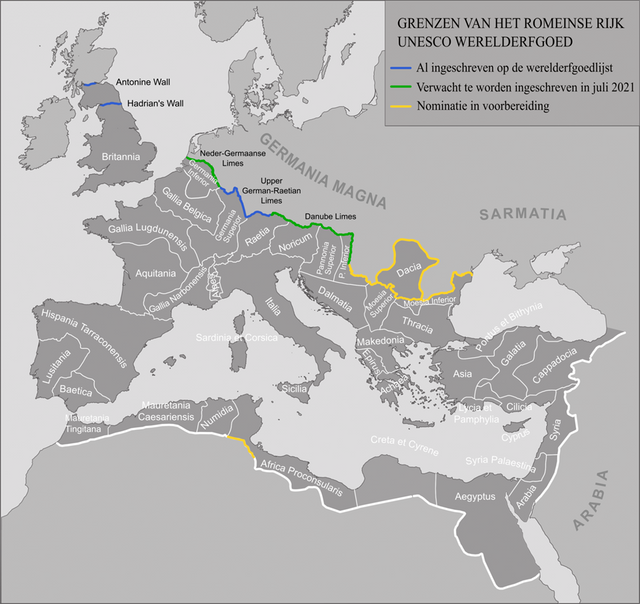
Historic Nijmegen - The oldest city in The Netherlands
What is UNESCO World Heritage?
The Great Wall of China, the canals of Amsterdam, the pyramids of Egypt, but also the Grand Canyon in the United States and the Great Barrier Reef in Australia: they are all on the UNESCO World Heritage List. But what exactly is this World Heritage List?
UNESCO was established in 1945 as an organisation for Education, Science and Culture of the United Nations and is committed to combating poverty, promoting sustainable development and stimulating intercultural dialogue.
One of its components is the World Heritage Programme, which started in 1972 and resulted in the World Heritage List. This list now includes more than 1,000 monuments that enjoy an exceptional, universal status because of their cultural, historical or scientific significance. This heritage can be both cultural and natural and has as a common denominator that it is considered irreplaceably unique and belongs to the whole world.
A site does not simply appear on the list: it has to be nominated by one of the member countries of UNESCO, after which a special committee decides on its admission. You can therefore safely speak of an elite group.
